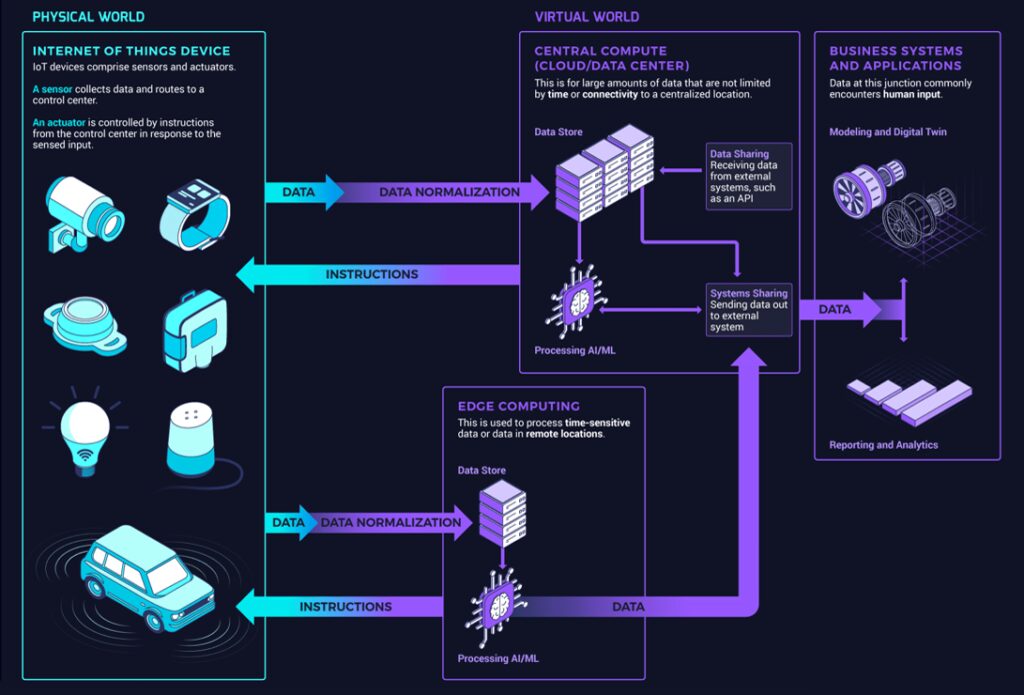The Internet of Things (IoT) is a network of interconnected devices equipped with sensors that collect and transmit data over the internet for analysis and decision-making. It has applications in healthcare, agriculture, and manufacturing. Challenges include security, privacy, and compatibility issues, but the future of IoT is promising with increasing connectivity and data-driven decision-making. Despite concerns, IoT has the potential to revolutionize industries, improve efficiency, and enhance customer satisfaction through innovation and growth. Stakeholders must address security and privacy concerns while working towards developing standards for seamless integration of IoT devices.
The Internet of Things: Connecting the World through Data and Devices
What is the Internet of Things?
The Internet of Things (IoT) is a network of interconnected devices that can communicate with each other and exchange data over the internet. These devices, which can range from household appliances to industrial machinery, are equipped with sensors, software, and other technologies that enable them to collect and transmit data. This data can then be analyzed and used to make informed decisions, optimize processes, and improve efficiency.
How does it work?
IoT devices rely on a combination of hardware and software components to function. Sensors embedded in the devices collect data on various parameters, such as temperature, humidity, and motion. This data is then sent to a central processing unit, which analyzes it and sends instructions back to the devices based on the information received. These instructions can range from turning on a light bulb to adjusting the temperature in a room.
Applications of IoT
The Internet of Things has a wide range of applications across various industries. In healthcare, IoT devices can be used to monitor patients’ vital signs remotely and alert healthcare providers in case of emergencies. In agriculture, IoT sensors can be used to monitor soil moisture levels and optimize irrigation systems. In manufacturing, IoT devices can be used to track inventory, monitor equipment performance, and improve production efficiency.
Challenges and Concerns
While the Internet of Things has the potential to revolutionize the way we live and work, it also presents several challenges and concerns. One of the main issues is security, as IoT devices are vulnerable to cyber attacks and data breaches. Privacy is another concern, as the vast amounts of data collected by IoT devices can be used to track individuals’ movements and behavior. Additionally, interoperability and compatibility issues between different devices and platforms can hinder the widespread adoption of IoT technologies.
The Future of IoT
Despite these challenges, the Internet of Things is expected to continue growing in the coming years. With advances in technology and the increasing availability of high-speed internet, more and more devices are expected to be connected to the IoT network. This will enable businesses to gather more data, automate processes, and make data-driven decisions in real time. As the IoT ecosystem expands, it is important for stakeholders to address security and privacy concerns, as well as work towards developing standards and guidelines to ensure the smooth integration of IoT devices.
Conclusion
The Internet of Things has the potential to transform our world by connecting devices and data in ways that were previously unimaginable. By harnessing the power of IoT technologies, businesses can improve efficiency, reduce costs, and enhance the overall customer experience. While there are challenges to overcome, the future of IoT looks bright, with endless possibilities for innovation and growth.
